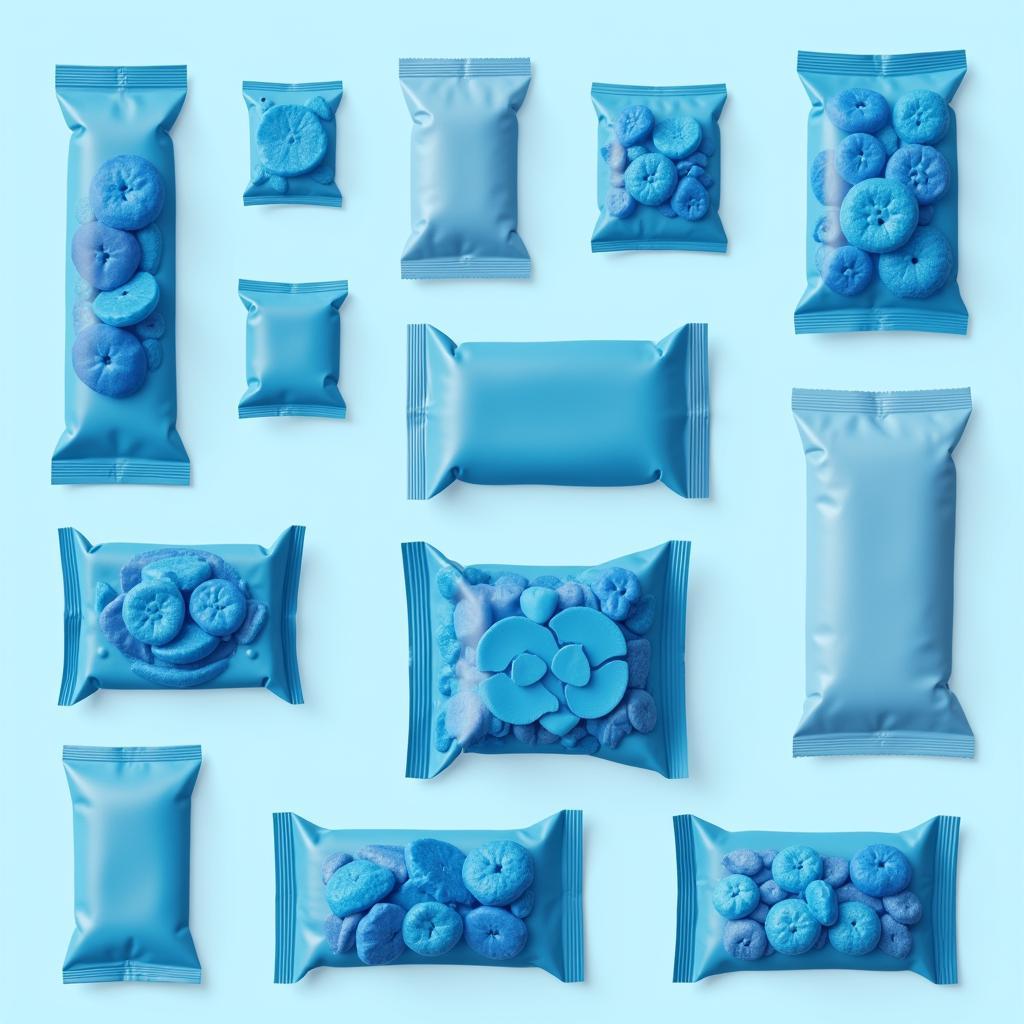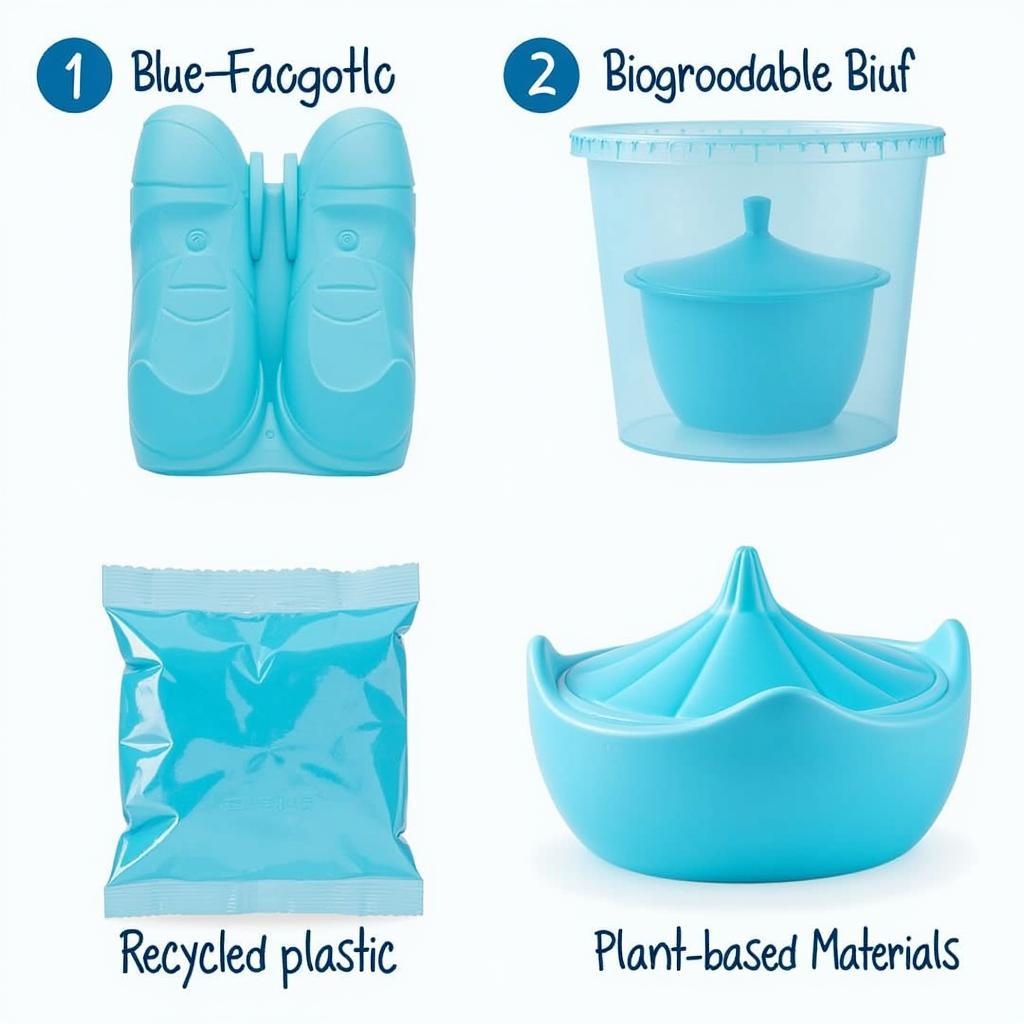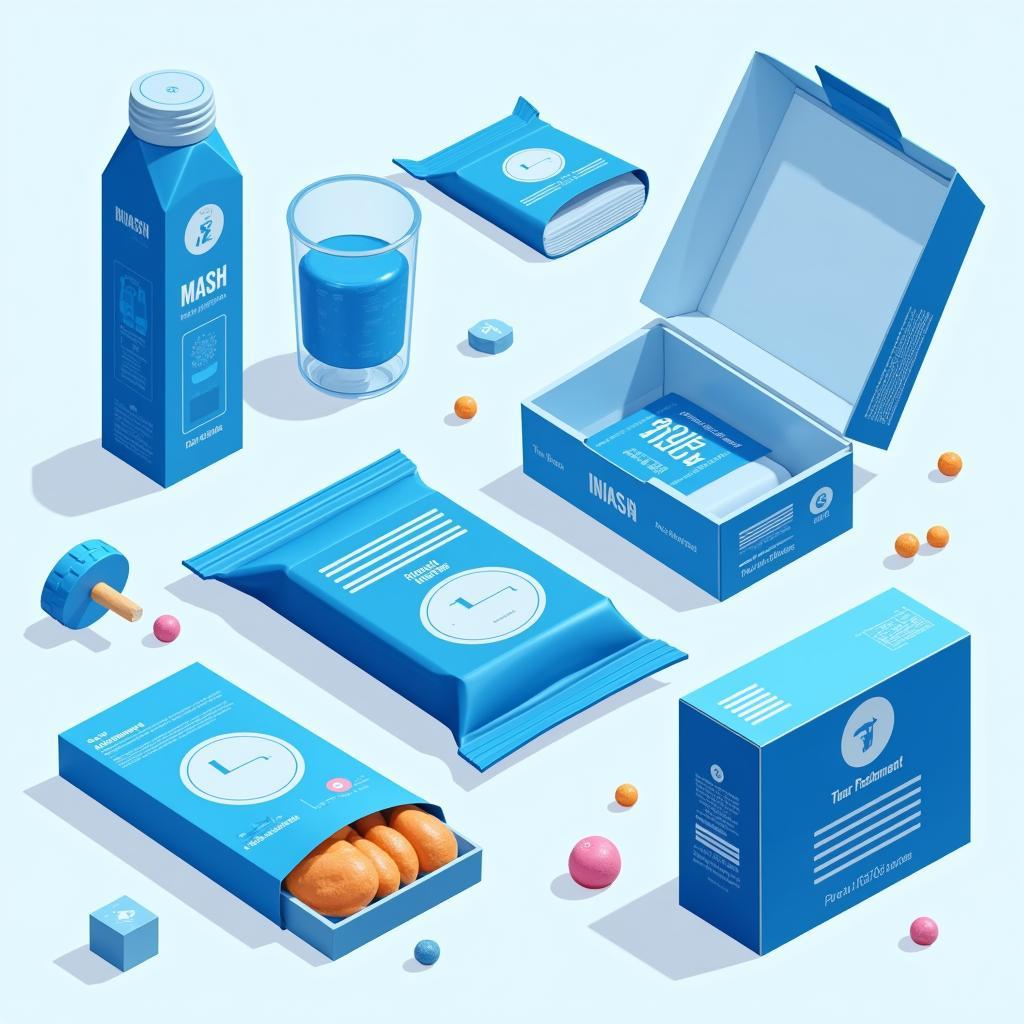Blue Food Packaging is everywhere. From your favorite snack to a gourmet meal, this color choice isn’t accidental. But what is it about blue that makes it so appealing for food brands? Let’s explore the psychology, practicality, and trends behind this popular packaging choice. You might be surprised by what you discover! Learn more about blue packaging food.
The Psychology of Blue in Food Packaging
Why blue? It’s a question many marketers and food scientists have pondered. The answer lies deep within our subconscious. Blue is often associated with trust, calmness, and reliability. Think of trusted institutions like banks and hospitals, many of which incorporate blue into their branding. This sense of security translates to food, subconsciously suggesting freshness and quality. Conversely, blue is rarely found in nature when it comes to edible things. This makes it a standout color on shelves, grabbing the attention of potential buyers. Furthermore, different shades of blue evoke different feelings. A light blue can signal purity and cleanliness, while a deep blue can suggest richness and indulgence. Food manufacturers carefully select the specific shade to match their product’s image.
Did you know that blue can also suppress appetite? While this might seem counterintuitive for food packaging, it can actually be beneficial for certain products marketed for portion control or healthy eating.
Practical Considerations for Blue Food Packaging
Beyond psychology, there are practical reasons for using blue food packaging. Blue dyes are readily available and cost-effective, making them a practical choice for mass production. Also, blue provides a good contrast for many other colors, allowing branding and product information to stand out clearly. This is especially important in crowded supermarket aisles where products compete for attention. Durability is another factor. Blue dyes tend to be lightfast, meaning they don’t fade quickly when exposed to sunlight, preserving the package’s attractive appearance longer.
Here at Mina Cones Food, we recognize the powerful impact of color on consumer perception. We meticulously choose our packaging to reflect the quality and freshness of our products.
 Examples of Blue Food Packaging
Examples of Blue Food Packaging
Trends and Innovations in Blue Food Packaging
The world of blue food packaging is constantly evolving. New trends and technologies continue to emerge, pushing the boundaries of design and functionality. One notable trend is the increasing use of sustainable materials. Consumers are increasingly eco-conscious, and brands are responding by incorporating recycled and biodegradable materials into their packaging, including blue-colored options. Another trend is the use of interactive packaging. QR codes and augmented reality features are becoming more prevalent, allowing consumers to access additional product information, recipes, and even games through their smartphones. This adds another layer of engagement and brand loyalty.
 Sustainable Blue Food Packaging Options
Sustainable Blue Food Packaging Options
Is Blue Right for Your Food Product?
While blue offers many advantages, it’s not a one-size-fits-all solution. The ideal packaging color depends on various factors, including the type of food, target audience, and brand image. Check out our blue seal bunny food and blue bird food products. For instance, warm colors like red and orange are often used for spicy foods, while green is frequently associated with natural or organic products. Careful consideration of these factors is essential for creating effective packaging that resonates with consumers. Need more specialized food shipped? Explore options like buffalo food shipped. Looking for premium fish food? Consider blue ridge platinum pro koi food.
Conclusion: The Power of Blue
Blue food packaging continues to be a popular choice for brands worldwide, and for good reason. Its psychological impact, practical benefits, and adaptability to evolving trends make it a powerful tool for attracting consumers and communicating brand values. By understanding the nuances of blue and its various applications, food manufacturers can leverage its potential to create packaging that stands out on the shelves and resonates with their target audience. Blue isn’t just a color; it’s a strategic element in the competitive landscape of the food industry.
 Future Innovations in Blue Food Packaging
Future Innovations in Blue Food Packaging
FAQ
-
Why is blue a common color for food packaging? Blue evokes trust, calmness, and is associated with freshness and quality.
-
Does blue suppress appetite? Yes, blue has been shown to have an appetite-suppressing effect.
-
What are the practical benefits of using blue dyes in packaging? They are cost-effective, durable, and provide good contrast for other colors.
-
Are there sustainable blue packaging options available? Yes, brands are increasingly using recycled and biodegradable materials for blue packaging.
-
Is blue the right color for all food products? No, the ideal packaging color depends on the product, target audience, and brand image.
-
What are some current trends in blue food packaging? Sustainable materials and interactive features like QR codes and augmented reality.
-
How can I learn more about choosing the right food packaging? Research industry trends, consider your target audience, and consult with packaging experts.
Common Scenarios and Questions
-
Scenario: Launching a new health food product.
- Question: Should I use light blue or dark blue packaging to best convey health and purity?
-
Scenario: Redesigning packaging for a premium snack brand.
- Question: How can I incorporate interactive elements into my blue packaging to enhance customer engagement?
Further Exploration
Explore other related topics on our website, such as food safety regulations and packaging design trends. Check out our blog for more insights into the food industry.
Contact Us
Need assistance? Contact us 24/7!
Phone: 02437655121
Email: [email protected]
Address: 3PGH+8R9, ĐT70A, thôn Trung, Bắc Từ Liêm, Hà Nội, Việt Nam.
Our customer service team is always ready to help.